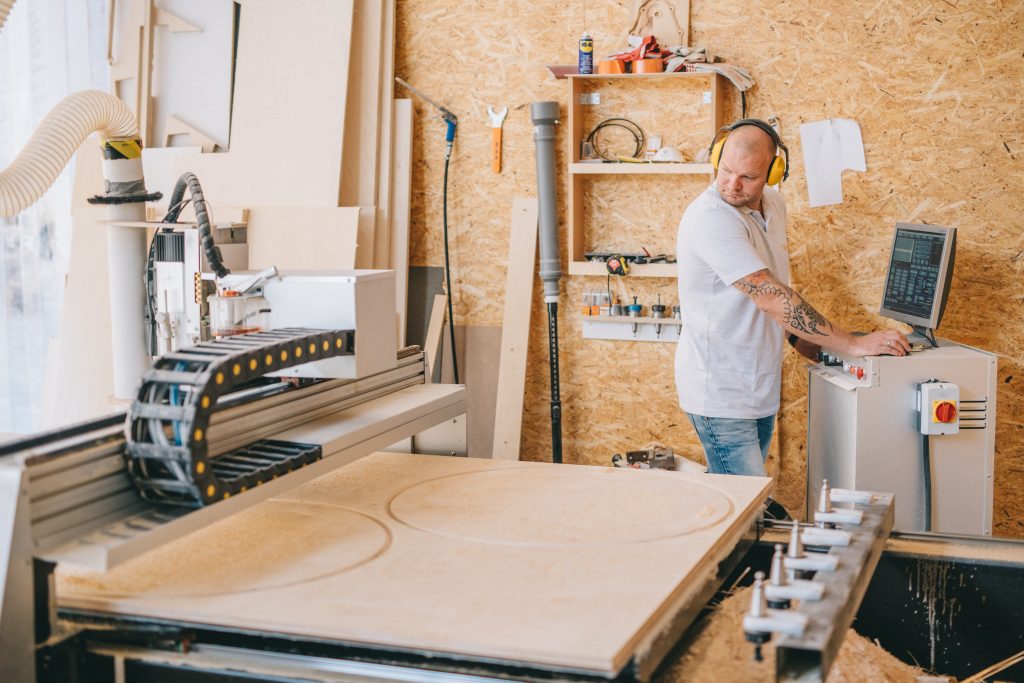The 5 types of manufacturing processes

When you think of manufacturing, it usually conjures up images of endless assembly lines, oily overalls, and even oilier mechanics making some metallic contraption.
In the early 1900s, this might have been correct, but now you can find different types of manufacturing. Some manufacturing types might even surprise the most seasoned manufacturer. The industry nowadays is far more diverse since the industrial revolution.
For example, all of these exist within the manufacturing industry:
- Food manufacturing
- Textile product mills
- Apparel manufacturing
- Wood product manufacturing
- Chemical manufacturing
- Computer and electronics product manufacturing
These sub-sectors within the manufacturing industry share one thing in common — they all implement one of the five manufacturing processes alongside their manufacturing ERP software.
In this article, we’ll explore the five types of manufacturing processes, where you’ll learn all about what a manufacturing process is and which is the best for your business. But be sure to read on to the end, as we have a sixth bonus manufacturing process you can use instead.
What is a manufacturing process?

A manufacturing process is a method a business will follow to make its products.
Deciding on the types of manufacturing you can use is determined by several factors, such as:
- Market demand for products
- The state of raw materials, components, and chemicals you handle
- Availability of resources and the state of your factory
The manufacturing techniques are all different, and all have unique advantages when used correctly.
For example, the batch production process works in large, make-to-stock continuous runs or smaller batches to satisfy demand and minimize waste. However, regardless of implementation, the process types remain largely the same. Knowing the five manufacturing processes will help you better decide which process type is best for your business.
Pro tip: Depending on the materials you handle and the products you make, one manufacturing process will be best for you. We’ve put together the ultimate guide to what manufacturing is for small businesses to help you choose the best processes for you.
The five types of manufacturing processes
1. Repetitive manufacturing
A manufacturer uses process types like repetitive manufacturing for repeating production to commit to a production rate.
Repetitive processing comprises dedicated production lines that produce the same or similar items, 24/7, all year round. With its requirements for setup being minimal or having little changeover, the operation speeds can be increased or decreased to meet customer demands or requirements.
Types of manufacturing like repetitive manufacturing distinguishing characteristic is its use of assembly/production lines.
2. Discrete manufacturing
Like repetitive manufacturing, discrete manufacturing also utilizes an assembly or production line.
However, this process type is highly diverse, with a variety of setups and frequent changeovers. This is due to factors based on whether the products in production are similar or different in design. If the items are vastly different, this will require altering the setup and a tear-down, which means production will need more time.
In theory, the types of manufacturing businesses that use discrete manufacturing produce products that can be broken down and recycled — automobiles, furniture, airplanes, toys, smartphones, etc.
3. Job shop manufacturing
Unlike the other process types, job shop manufacturing makes use of production areas rather than assembly lines.
This production process will produce smaller batches of custom products, either make-to-order (MTO) or make-to-stock (MTS). Organizing workstations in a job shop setting allows manufacturers to make one version of a custom product or even a few dozen in batches. If customer demand requires it, the operation can become a discrete manufacturing line with selected labor operations being, potentially, replaced by automated equipment.
It’s good to choose these manufacturing types if you’re a manufacturer handling bespoke products or work on a project-to-project basis.
Pro tip: Many job shop manufacturers take advantage of job shop manufacturing software, which helps you manage your production and switch up your workflow process if needed.
4. Continuous process manufacturing
Similar to repetitive manufacturing is the continuous manufacturing process, which runs 24/7 too.
However, continuous is a different type of manufacturing due to the state of raw materials being gases, liquids, powders, or slurries. But, in areas like mining, the products can be granule materials. Product designs are similar unless the disciplines to create a final product or a production process are more diverse.
You can find this production process in oil refining, metal smelting, and even in food production like peanut butter.
5. Batch process manufacturing
The final process shares similarities with discrete and job shop processes — batch process manufacturing.
Depending on consumer demand, one batch could be enough to meet that demand. After a batch production run, a manufacturer cleans the equipment to prepare the machinery for the next batch. Batch processes are continuous by nature.
Batch processes are achievable when ingredients or raw materials aren’t made to a strict standard. Like the continuous manufacturing process, the product ingredients are similar, and the production process is more diverse.
Bonus sixth manufacturing process
Thanks to technological advancements, there is now a new method to add alongside the process types.
3D printing, first conceived in the 1980s, allows manufacturers to fabricate products from various composites and materials instead of the traditional use of physical labor or automation. Since the ’80s, this manufacturing process has seen an 875% growth in the last five years. Although it’s still in its infancy, 3D printing promises to be a potential avenue as a manufacturing technique in the future.
We hope this article clears up any misunderstandings you might have about the different types of manufacturing processes.
Once you’ve contemplated the types of manufacturing processes and decided which is most beneficial for your company, your next step will be finding an manufacturing software to help you manage your process. Get started with Katana Cloud Inventory by booking a demo and get your production up and running smoothly.
And until next time, happy manufacturing.






